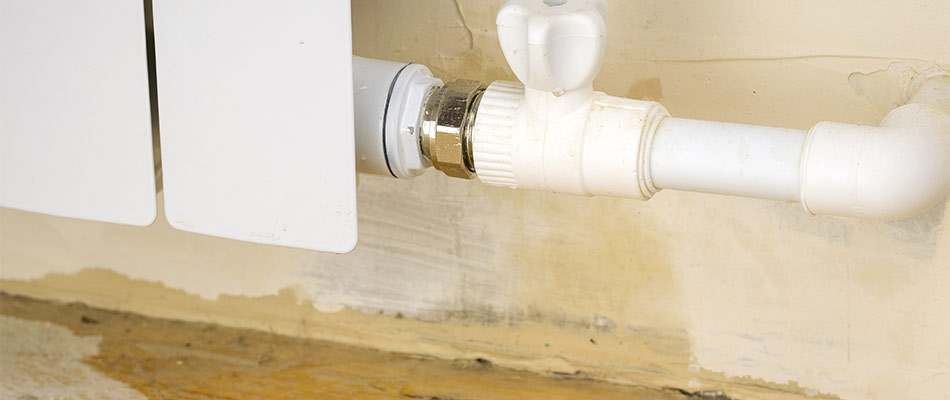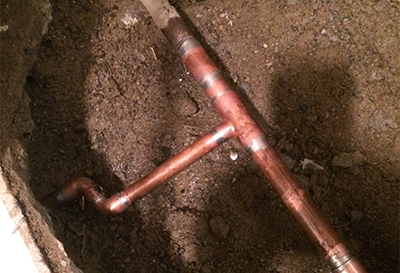How to Find and also Fixing Water Leaks-- A Comprehensive Overview
How to Find and also Fixing Water Leaks-- A Comprehensive Overview
Blog Article
The publisher is making a few great pointers on Locating water leaks overall in this post which follows.

Early discovery of leaking water lines can alleviate a potential disaster. Some little water leaks might not be noticeable.
1. Take A Look At the Water Meter
Every house has a water meter. Examining it is a surefire way that assists you find leaks. For starters, shut off all the water resources. Make sure nobody will certainly flush, make use of the tap, shower, run the cleaning maker or dish washer. From there, go to the meter as well as watch if it will change. Since no person is using it, there ought to be no motions. That suggests a fast-moving leak if it relocates. Similarly, if you detect no changes, wait a hr or 2 and also examine back once again. This indicates you may have a sluggish leakage that might also be underground.
2. Examine Water Intake
If you find unexpected adjustments, despite your consumption being the exact same, it implies that you have leaks in your plumbing system. A sudden spike in your bill shows a fast-moving leakage.
A steady boost every month, also with the same routines, reveals you have a sluggish leak that's additionally gradually rising. Call a plumber to completely examine your building, particularly if you really feel a warm area on your flooring with piping below.
3. Do a Food Coloring Examination
When it comes to water intake, 30% comes from bathrooms. If the color in some way infiltrates your dish during that time without flushing, there's a leakage between the container as well as bowl.
4. Asses Exterior Lines
Do not fail to remember to inspect your outdoor water lines also. Test faucets by affixing a garden hose. Should water leak out of the link, you have a loosened rubber gasket. Replace this and also make sure all connections are tight. If you have actually got a lawn sprinkler, it will assist get it properly checked out and also maintained every year. One tiny leakage can throw away tons of water and spike your water costs.
5. Assess the situation and evaluate
Property owners ought to make it a habit to check under the sink counters and even inside cupboards for any kind of bad odor or mold and mildew development. These two warnings indicate a leakage so prompt attention is required. Doing routine inspections, also bi-annually, can conserve you from a major trouble.
Extra significantly, if you recognize your residence is currently old, keep a watchful eye on your heating systems, pipes, pipes etc. Check for stainings and also deteriorating as many appliances and also pipes have a life expectancy. They will likewise naturally wear away as a result of wear and tear. Do not wait for it to rise if you suspect leaking water lines in your plumbing system. Call a specialist plumber immediately so you don't wind up with a horrible mess in your house.
Early detection of dripping water lines can alleviate a prospective disaster. Some little water leakages may not be visible. Examining it is a surefire way that helps you discover leaks. One tiny leak can waste loads of water and surge your water costs.
If you suspect dripping water lines in your plumbing system, do not wait for it to escalate.
How to Know If Your Home Has a Hidden Leak
Water Meter Reveals Inexplicable Water Usage
If you’d like to test whether or not there’s a leak somewhere in your home, you can do this using your water meter. Here is how to conduct the test:
Don’t use any water in your home for at least 30 minutes; this also means not turning on faucets or water-using appliances.
Go outside, and check your water meter for activity.
If your water meter shows that there was activity, even though no one was using any water, this proves that there is a leak in your home.Visible Mold or Mildew Growth
Leaks behind walls create moist, dark environments that allow mold and mildew to grow and thrive. Eventually, you might see mold growth forming on the wall closest to a hidden leak.
If mold is growing in an area that receives a high amount of moisture, such as a bathroom, it may simply be an indication that better ventilation is needed. However, if you see mold growth on a wall or the ceiling in an area where you would not expect, you probably have a hidden leak.
Musty, Mildew Odor
Sometimes you might not be able to see the mold or mildew that is growing as a result of a leak. However, the smell can give the problem away just as easily. If you catch a whiff of something musty, there’s a good chance that old water is collecting somewhere in your home that you can’t see.
Stained/Warped Walls, Ceilings, or Floors
When your home soaks up water, a variety of red flags can become visible, including ceiling stains, bubbling drywall, warped walls, and sagging floors. While these issues can be caused by excess humidity, they can also be signs that a pipe or plumbing connection has started leaking behind your walls.
Inexplicably High Water Bill
After a while, you get a general sense for what your water bill should be. If you own a pool or sprinkler system, your bill will tend to be higher during summer. However, if you receive a water bill that seems especially high, and you can’t figure out what caused it, then you may have a hidden leak somewhere that’s increasing your bill.
https://www.plumbingjoint.com/blog/2019/july/how-to-know-if-your-home-has-a-hidden-leak/

We had been guided to that article about Top leak detection hacks from someone on a different blog. If you appreciated our article if you please be sure to share it. We appreciate reading our article about Leaking water lines.
Report this page